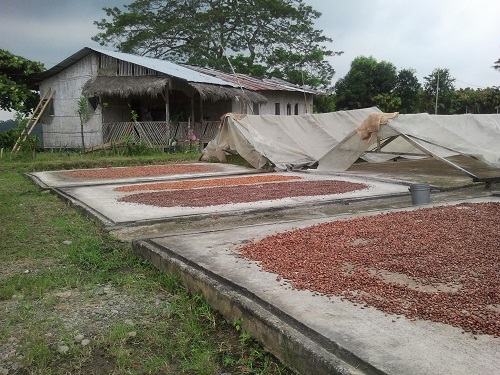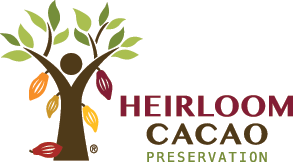/ Chocolate Resources / Chocolate Blog / NOT another chocolate shortage article

NOT another chocolate shortage article

Okay, okay, I know we’re all tired of hearing about the chocolate shortage, the chocolate crisis, chocolypse 2020, insert the overly dramatic phrase of your choice <HERE>. Much of the coverage for this story focused on the idea of the world running out of chocolate, and that we may have to pay more for our chocolate in the future, without delving much deeper. But those of us in the chocolate industry know that it is so much more complicated than that. So let’s just take a few moments to give a voice to the things that really matter about this issue.
The demand for chocolate is on the rise
While there was a lot of drama related to this issue, it is true that the demand for chocolate is rising, and that the world cocoa supply may not be able to keep up. North America and Europe continue their well-established love affair with chocolate, but the largest increases in demand are coming from China, where chocolate sales are estimated to grow nearly 60% by 2019 to $4.3 billion, and India, where chocolate consumption is estimated to rise 41% by 2018. It has been estimated that by 2020, the world will need another million tons of cacao beans, which is about the same as another Ivory Coast (where most of the world’s cacao is grown) in order for the supply to keep up with the demand. There is no question that the demand for chocolate is rising, and that we will have to determine how to best meet this demand. While breeding programs looking to create plants that are high-yielding and more resistant to disease are certainly one part of the solution, there are other issues at hand.

Cacao growing in Ecuador
Cacao is a high maintenance crop
Let’s talk for a minute about our friend the cacao tree. Cacao can only be grown in certain parts of the world, more specifically 20 degrees north or south of the equator. From the time a tree is planted, it takes roughly 7 years before there are cocoa pods that are mature enough to harvest. That’s assuming that the trees don’t become infected by frosty pod rot, witches’ broom, or one of the other ghastly sounding diseases that are prone to infect the crops. In fact, roughly 30 to 40% of the crops grown are decimated by these or other diseases that attach the trees each year. Many types of cacao grow in rain forests under shade trees, where farmers must ensure the right balance between sun and shade. Then the pods are harvested, and the post-harvest practices are also extremely important to preserving the flavor of the cacao. So it takes a lot of care and attention for cacao trees to produce the pods and beans that will one day become chocolate.
Mass market chocolate is different from fine flavor chocolate
This is a distinction that certainly some, but not all articles made clear, and it’s an important one. Over 70% of the world’s cocoa is grown in West Africa for huge, multinational companies like Mars, Mondelez, Hershey, etc. The products created with these beans are so full of sugar and other additives that the quality or flavor of the cocoa really isn’t that important. These companies are concerned purely with growing varieties that are high yield, and resistant to disease.
Fine flavor cacao, on the other hand, is typically grown on small, family farms that have been passed down for generations. It accounts for about 5 to 7% of the world’s overall cocoa production. And these are the crops that are truly in jeopardy, not simply in terms of being able to meet the growing global demand, but whether they will exist in the future at all.

Drying cocoa beans
Most farmers are not paid enough for their crops
Cacao is a demanding crop to grow, and the farmers who grow it don’t earn very much money. The average cacao farmer earns $2.02 per person, per day, for their 6 member family. To put that number in perspective, within the United Nations Millennium Development Goals, extreme poverty is defined as $1.25 per person, per day. Taken together, it’s not that surprising that many cacao farmers are ripping out their trees to grow more lucrative crops, such as coffee, palm oil, rubber and bananas. The younger generation of farmers don’t want to grow cacao because they don’t see how they can earn a living.

Cocoa bean
We must pay more for fine flavor cacao so that farmers keep growing it
Many of the “chocolate crisis” articles didn’t even mention the farmers, instead taking the “the world is going to need to pay more for their chocolate bars” tact, painting it simply as a supply and demand issue. Or they mentioned the farmers from the perspective of needing to grow species that are higher yielding and disease resistant to better meet the increased demand. Sadly, many of these new hybrids are grown with little consideration for flavor. Yes, the bottom line is that we likely will need to pay more for chocolate, but there is a greater issue at stake. If we want farmers to continue to grow fine flavor cacao, then the industry needs to pay them more for their beans, and in turn, consumers need to pay more for their chocolate. Unless we want to be left with tasteless chocolate, we need to educate consumers about what is at stake, and WHY their fine chocolate must cost more.
This is one of the reasons why Ecole Chocolat was one of the founders of the Heirloom Cacao Preservation (HCP) – to link flavor to genetics for the first time, much like the flavor of wine is linked to grape varietals. Designating cacao with exceptional flavor as “heirloom” is one of the first steps to helping the farmers that grow it command a higher price for their beans.
There have already been some amazing examples of inventive ways to support cacao farmers, one of which is the paradigm of direct trade – chocolate makers establishing direct relationships with the farmers that grow the beans to ensure that more of the funds go directly to the farmer rather than the middlemen typically involved in the transaction. This goes above and beyond fair trade certification, which typically costs the farms so much money to acquire and maintain the certification that there is little left in the way of additional profit. Askinosie Chocolate has taken direct trade one step further – in addition to establishing direct relationships with farmers, they have established a profit sharing program in which some of the profits are given back to the farmers themselves. And these relationships are not only about money, they are about creating a stronger community for the farmers – helping women to have stronger voices in their family business, building schools so that children can receive education. These initiatives help to provide a better quality of life for the farmers who are growing the cacao we love. So let’s not only focus on whether we will have chocolate to eat when a craving strikes, let’s look at the system as a whole, and what we can do to help to ensure its sustainability. For consumers, the most basic step forward is understanding why fine flavor chocolate must cost more, and willingly pay these prices for a far superior product.
For an informative and engaging discussion about sustainability in the cacao and chocolate industries, watch the video replay of our Chocolate Masters Hangout featuring Ed Seguine of Seguine Cacao, Cocoa & Chocolate Advisors, and Shawn Askinosie of Askinosie Chocolate.
Want to learn more about making delicious chocolates and confections? Check out our Professional Chocolatier Program!
Get reminders about upcoming classes! To receive program updates and news, click the link below.
Photography by Jessica Washburn, Bliss Chocolatier and Ecole Chocolat





